Do you love triple-berry smoothies with strawberries, raspberries, and blackberries? You may not realize it, but you’re actually just drinking a fruit smoothie, not a “berry blast” at all. Strawberries, raspberries, and blackberries, despite their misleading names, are not berries.
Cranberries and blueberries, which also contain the word “berry” in their names, are examples of true botanical berries. To understand why they fall into the berry category, while strawberries do not, keep reading!
Strawberries, Raspberries, and Blueberries: Not Berries?
Strawberries, raspberries, and blueberries are aggregate fruits, which are fruits that are made of a number of smaller fruits. They grow on plants with flowers that have more than one ovary. True berries grow from single flowers that have single ovaries. And while it’s just a matter of classification that sorts fruits into berry versus non-berry categories, it’s interesting that three of the most common berries aren’t berries at all!
A botanical berry is classified as a simple fleshy fruit with many seeds but without a pit. The outer layer of the single ovary wall ripens into a fleshy fruit, most of which are edible. There are a few berries that aren’t edible and are actually poisonous. The most notable of these poisonous berries belong to the nightshade family, which you’ll learn more about below.
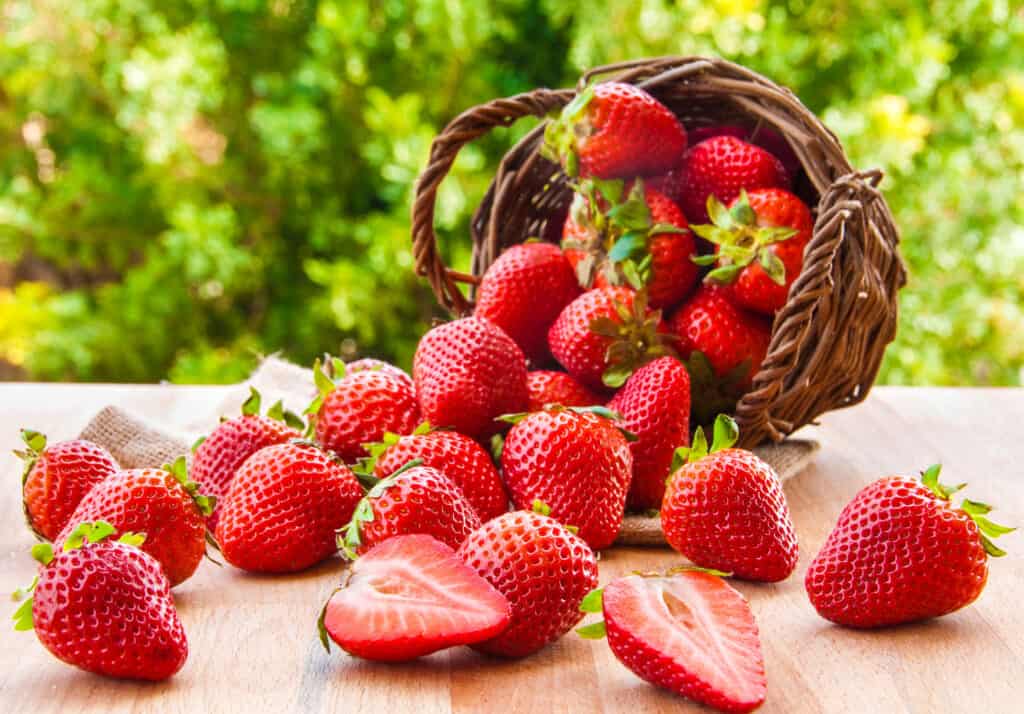
These tasty red fruits aren’t berries after all!
©iStock.com/MariaUspenskaya
Bananas
Banana pudding and banana splits are two classic desserts, but you wouldn’t order a “berry” pudding and expect to see a banana. Though they may not seem like it, bananas are botanically classified as berries. They’re soft, starchy fruits that come in green, yellow, red, purple, and brown varieties.
Bananas usually grow in clusters near the top of the banana plant. There are many varieties of wild bananas, but two main types that have been cultivated: Musa acuminata and Musa balbisiana, as well as a hybrid of the two called Musa x paradisiaca.

Bananas grow upwards in bunches near the top of the plants.
©vincentchuls/Shutterstock.com
Avocadoes
If you love some avocado toast with breakfast, you may not realize you’re actually eating a berry! Avocados are large berries with single large seeds. The plants were first domesticated in Mesoamerica over 5,000 years ago, prized for the large and oily fruits they produce. Avocados come in many different cultivars and have green, brown, purple, or black skin when ripe.
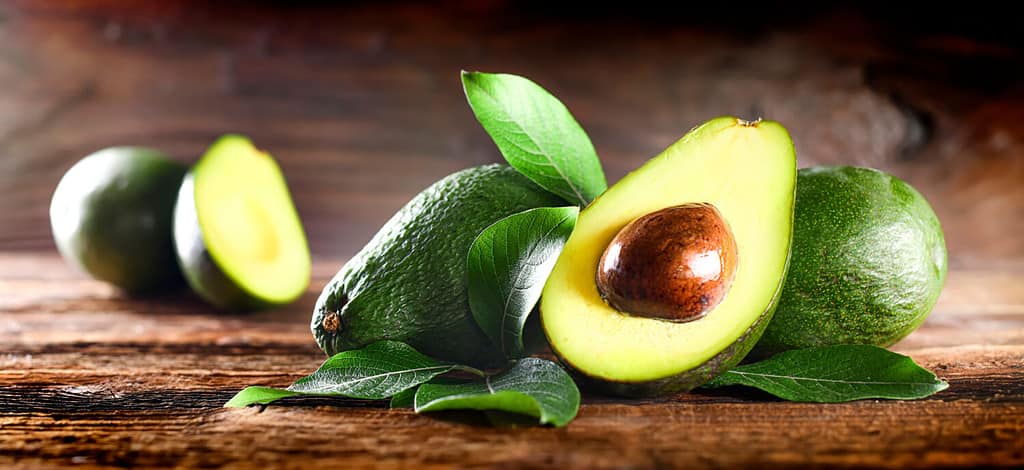
Avocadoes are made up of one large seed surrounded by soft, oily flesh.
©Krasula/Shutterstock.com
Elderberries
Elderberries are unique berries that are only edible when cooked after removing the stems, leaves, and other plant parts. The berries are the only edible part of the Sambucus plant. If the berries are raw, they are toxic. While the cooked berries are used for jam, wine, and juice, they are to be used with caution and processed properly. It’s also important to note that when foraging for berries, the elderberry plant is very close in appearance to the deadly water hemlock plant, so make sure to be cautious when collecting berries.
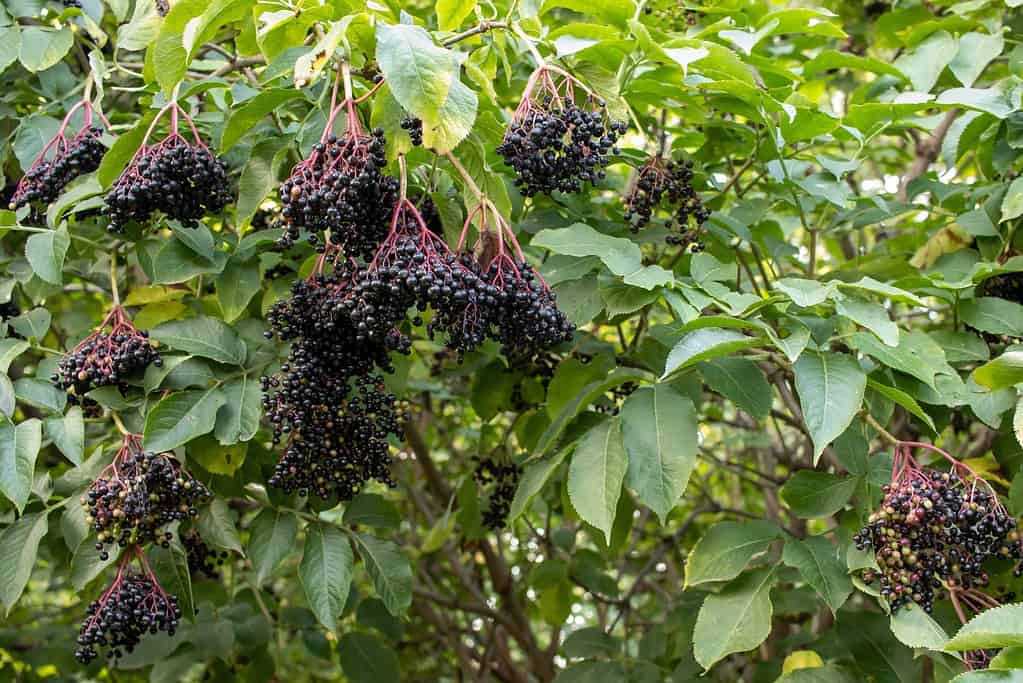
Elderberries are only safe to consume cooked after removing the stems and other plant debris.
©Juver/Shutterstock.com
Pumpkins
There’s nothing better than a slice of pumpkin pie during the fall, but did you realize that you’re really eating a berry? That’s right, pumpkins are one of the many types of botanical berries that might surprise you. They come in many colors of yellow and orange, as well as white, green, and purple! Pumpkins have been around for thousands of years, with the first pumpkin fragments found in Mexico, dating back somewhere between 7,000 and 5,500 B.C.
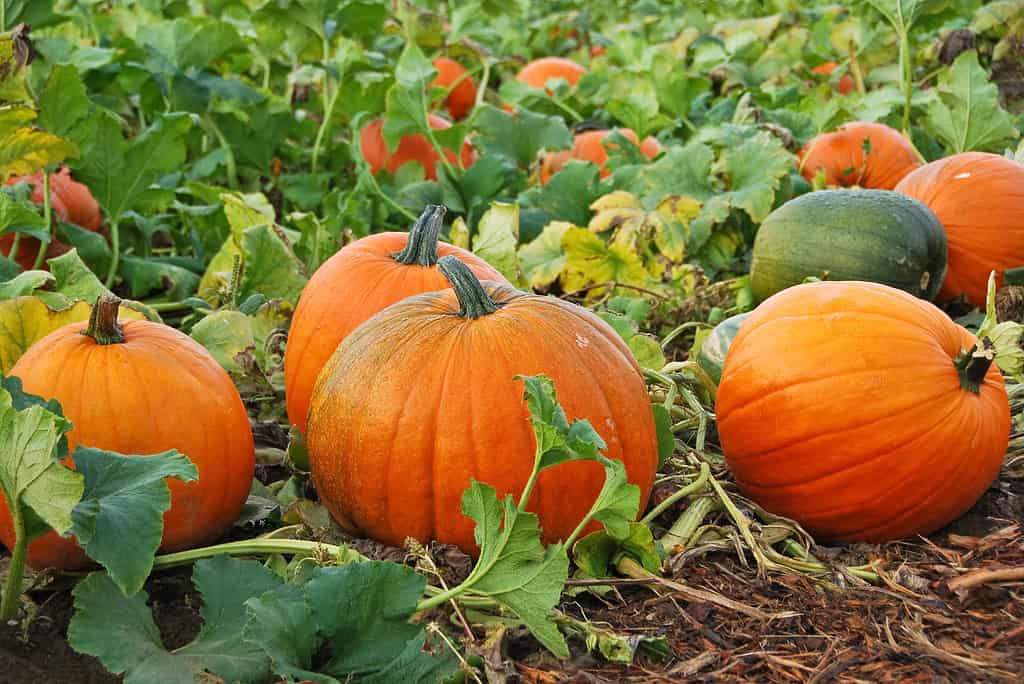
Pumpkins come in many colors and were first documented in Mexico thousands of years ago.
©Loren L. Masseth/Shutterstock.com
Watermelons
My favorite fruit of summertime made it onto our list of berries! I think there’s a common misconception that berries are little and easy to pop in your mouth for a snack. Watermelons, which can grow anywhere from 5 to 100 pounds, definitely don’t fit the definition of “little.” Yet, these delicious tropical fruits are technically berries!
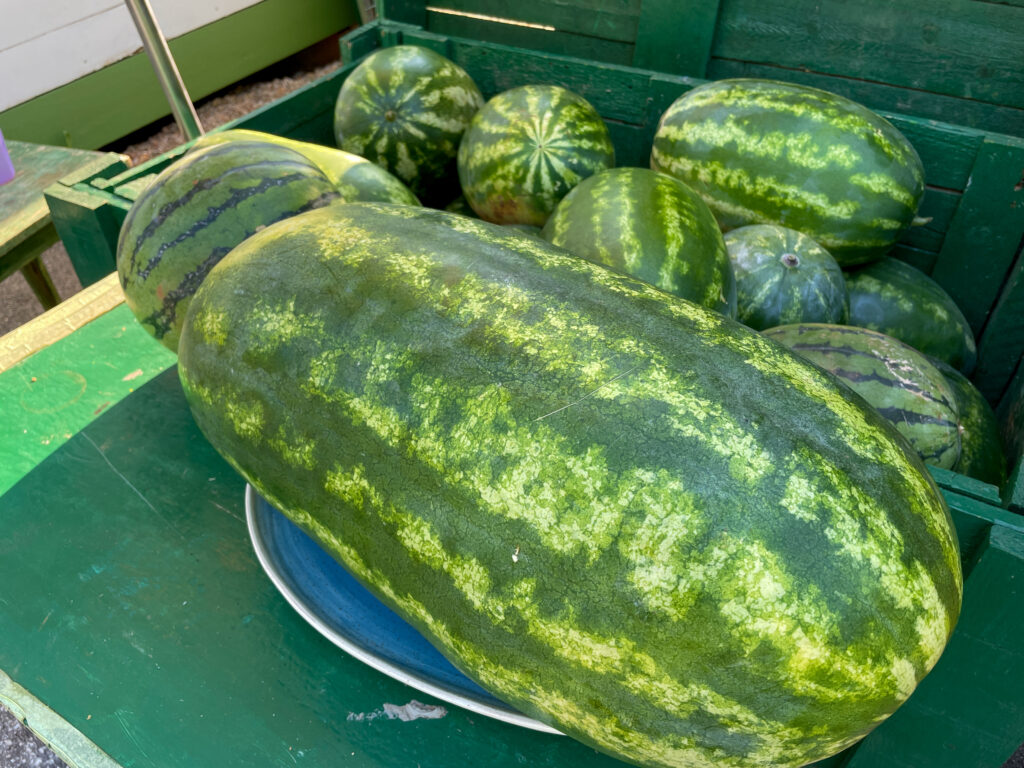
Watermelons are some of the biggest berries you can buy!
©iStock.com/1340211439
Grapes
One of the oldest cultivated berries in the world are grapes. They were cultivated around 8,000 years ago, and are one the most common fruits mentioned in writing. One reason for this is because they are used, along with yeast, to make wine. The oldest known winery was built around 6,000 years ago in Armenia.
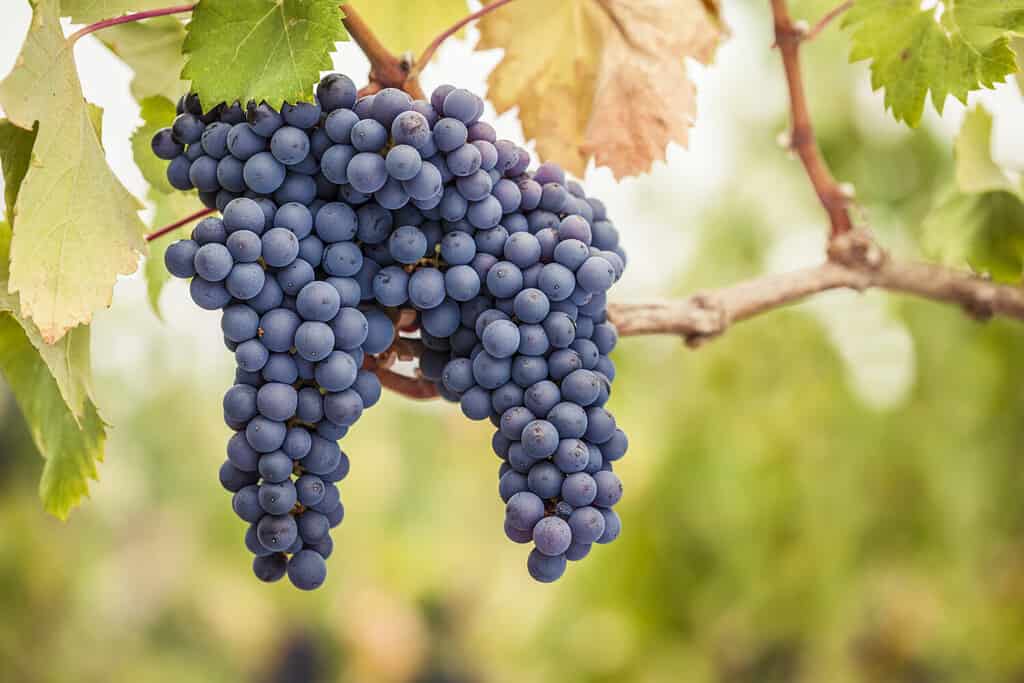
Grapes, along with wine, are some of the most commonly mentioned berries in stories and books.
©Andrew Hagen/Shutterstock.com
Cucumbers
Cucumbers are around 95% water, and while they are a type of berry, they are usually eaten as a vegetable. Despite being made of mostly water, they contain a good amount of vitamins A, C, and B6. Cucumbers are one of the only fruits that you can actually burn calories while eating, as a whole cucumber is made of just 16 calories! It takes more effort for your body to chew it than it replaces!
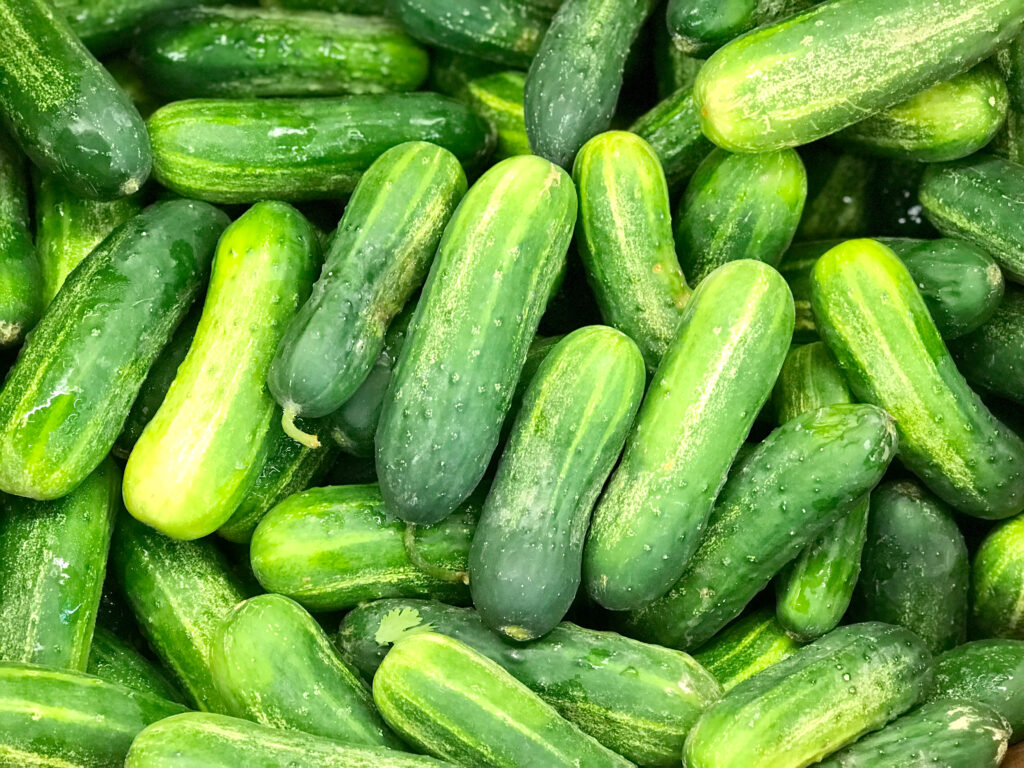
Did you know that it takes more calories to chew a cucumber than the amount it provides you with?
©Mohammad Hossen/Shutterstock.com
Kiwis
Kiwifruit, which is usually just called ‘kiwi’ in most places, is a berry from the Actinidia species of vine. Kiwis have thin, fuzzy, edible skins and soft, fleshy insides with hundreds of edible seeds. The kiwifruit is native to China and is also called the Chinese gooseberry. It’s described as being the size of walnuts with a flavor that resembles ripe gooseberries, leading to its name. It wasn’t until 1962 that it took on the name ‘kiwifruit’. The name was given to the berry by some New Zealand growers who thought its’ fuzzy skin resembled the kiwi bird.

Kiwis have fuzzy, brown skins and green flesh with hundreds of tiny edible seeds.
©Oksana Mizina/Shutterstock.com
Tomatoes
If tomatoes are fruits, is ketchup a type of jelly? Tomatoes are another type of berry that may surprise you. Tomatoes come from the Solanaceae family, which includes potatoes, eggplants, and deadly nightshade.
Related to a plant like “deadly nightshade”, you may be wondering about the toxicity of tomatoes. It’s true that the Solanaceae family of plants is full of toxic fruits, but tomatoes are not considered toxic. However, the rest of the plant, including the leaves and stalk, are poisonous.
At one point in time, it was believed that tomatoes were toxic because a few aristocrats got sick and died after eating them. But further research led to the discovery that the people were only getting sick when they consumed the berries off of a pewter plate. The acidity in the tomatoes acted to draw out the lead from the pewter plates, which was actually what caused the aristocrats’ death.
Because tomatoes can cause metals to leach from plates and cookware, one way to use this to your advantage is by cooking them in cast iron. This can add help add iron to your meal, which is especially great for anemics!

These berries may be nightshades, but they aren’t the deadly ones!
©Graham Corney/Shutterstock.com
Potato Fruits
You’ve never eaten a potato fruit, because if you had, you probably wouldn’t be here. That’s because the fruit of the potato plant is toxic. In fact, like tomatoes, potatoes are a part of the Solanaceae, or nightshade, family. The tubers, which are what we grow and consume as potatoes, contain the least amount of solanine. Potato fruits grow above ground on the plant and resemble cherry tomatoes, but unlike the small tomatoes, they are not safe to consume.
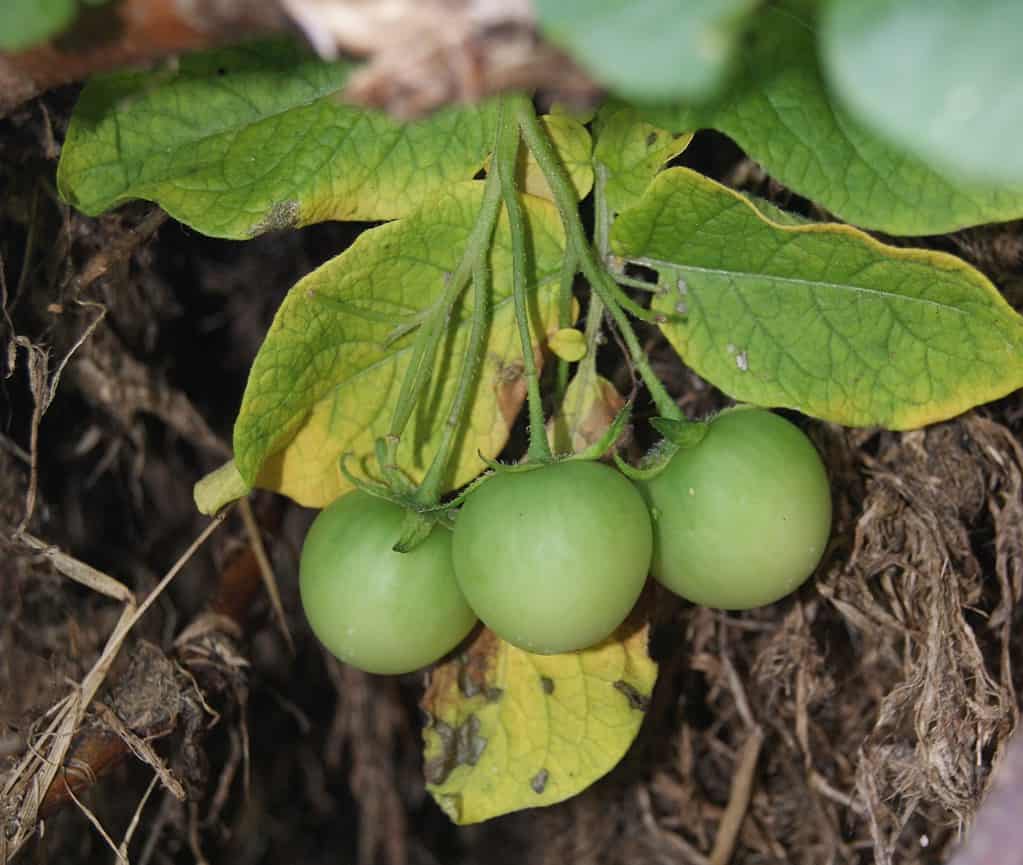
Potato fruits are toxic no matter how they are prepared.
©Danny S. / CC BY-SA 4.0 – License
Deadly Nightshade
While the name should give it away, these berries are toxic and should be avoided. They are a true type of berry, and they are also a part of the Solanaceae family along with tomatoes, potatoes, and eggplants. Every part of the deadly nightshade plant is toxic and will cause blurred vision, convulsions, and eventually death if consumed. It is very important to avoid berries of the deadly nightshade plant because it only takes two berries to be fatal for children, and 10 to 20 to cause fatalities in adults.
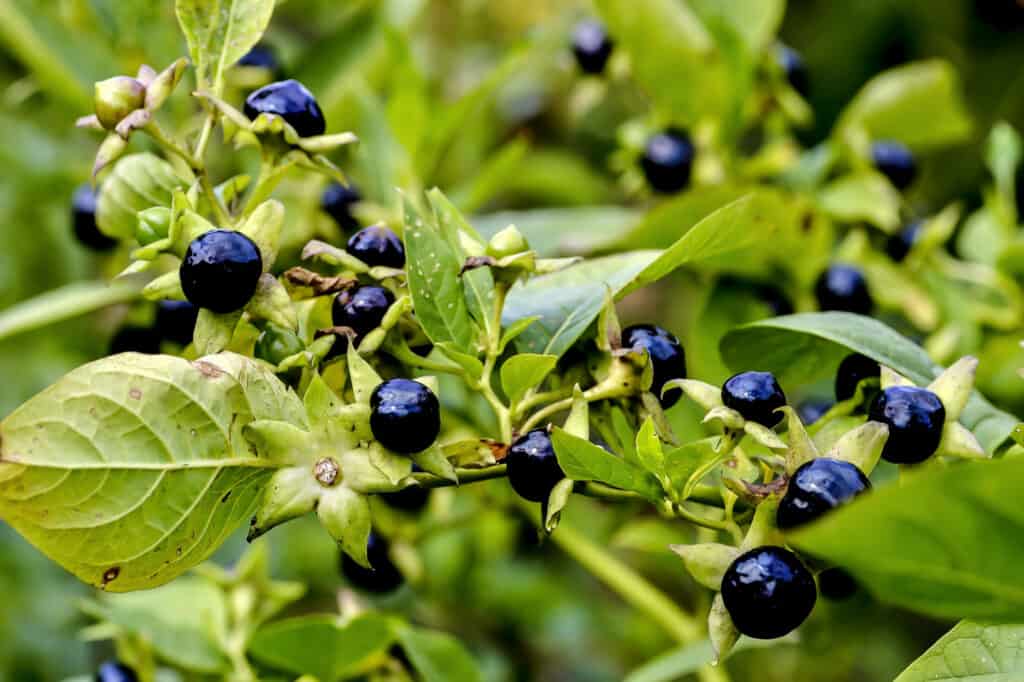
Deadly nightshade berries are extremely poisonous and should be avoided completely.
©Simon Groewe/Shutterstock.com
Summary of the 11 Surprising Fruits That Are Berries
| Surprising Foods That Are Berries | |
|---|---|
| #1 | Bananas |
| #2 | Avocadoes |
| #3 | Elderberries |
| #4 | Pumpkins |
| #5 | Watermelons |
| #6 | Grapes |
| #7 | Cucumbers |
| #8 | Kiwis |
| #9 | Tomatoes |
| #10 | Potato Fruits |
| #11 | Deadly Nightshade |
The photo featured at the top of this post is © Natalia Korshunova/Shutterstock.com
Thank you for reading! Have some feedback for us? Contact the AZ Animals editorial team.






